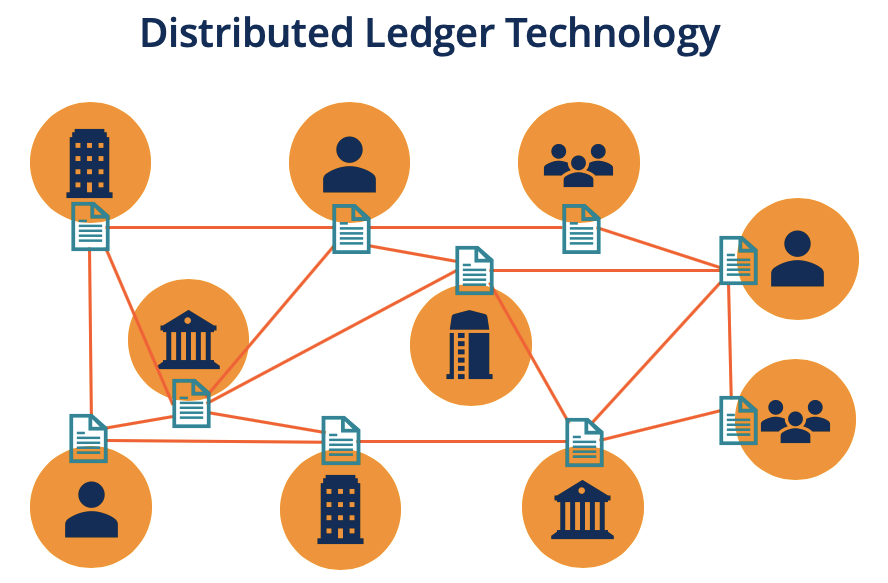Blockchain is a digital ledger of transactions transmitted on the blockchain throughout the whole network of PCs (or nodes). Rather than keeping transactions within one central server, distributed ledgers make use of independent nodes to file, talk about as well as synchronize transactions within their respective digital ledgers. You can start your trading journey and improve your trading strategies by visiting bitcoinxox.com/.
Blockchain technology utilizes a few technologies, including digital signatures, distributed networks as well as encryption/decryption techniques, such as distributed ledger technology, to permit blockchain applications. The blockchain is among several kinds of DLT where transactions are captured with an unchanging cryptographic signature known as a hash. This is the reason you will find that blockchain technology is often called a distributed ledger.

About Distributed Ledger Technology (DLT)
Distributed Ledger Technology (DLT) is focused on an encoded as well as sent-out database, in which files are kept concerning transactions. A distributed ledger’s an electronic database that’s distributed over many computers, countries, institutions, and nodes, and that’s accessible by several individuals around the globe.
What are the features of DLT?
- Append only: In contrast to a standard data structure, distributed ledgers are just appended only, where information could be modified.
- Shared: The distributed ledger isn’t connected to any one person or person. It’s distributed among the nodes of the system, exactly where several nodes have a total copy of the ledger, while a few nodes just have the required data making them useful and effective.
- Immutable: A distributed ledger utilizes cryptography to produce a safe and sound database where data can’t be changed or altered once it’s kept.
How can traditional bookkeeping methods be replaced by DLT?
The distributed ledger technology has the potential to enhance these conventional bookkeeping techniques by updating as well as changing basic strategies of exactly how details in the ledger are gathered, discussed and also managed. To be able to fully grasp this, primarily paper-based as well as conventional electronic ledgers have been employed to control information which has a central point of command.
This particular kind of computer needed high computing resources as well as labour to keep ledgers, and additionally had numerous points of failing, but DLT enables real-time sharing of information with transparency, giving trust that the information is legitimate and current.
The Distributed Ledger Technology additionally removes a particular point of failure, that stops errors and manipulations from taking place in the Ledger. No demand for the main authority to verify transactions within DLT, rather, various consensus mechanisms are utilized to validate transactions.
What are the advantages of Distributed Ledger Technology?
- Decentralized – One single point of failure could be present in a central system, which may kill the entire community in case an error is created by a central authority. There’s, nonetheless, without chance of one point of failure when it comes to dispersed networks, as the decentralized framework improves the trust factor in participating nodes. This particular centralized validation significantly lessens the cost associated with transactions.
- Time Efficient – This particular system is decentralized, which means there’s simply no demand for the main authority to verify transactions at each moment in time. Consequently, time is considerably reduced for the verification of every transaction. Transactions could be validated by people of the system itself utilizing different consensus mechanisms in the situation of DLT.
- Transparency – The distributed ledger offers an excellent degree of security since all transactions are noticeable to everybody. The inclusion of information has to be validated by diverse consensus mechanisms by nodes and when anyone tries to modify or even alter details in the ledger, it’s instantly mirrored throughout almost all nodes of the system, which stops invalid transactions.




